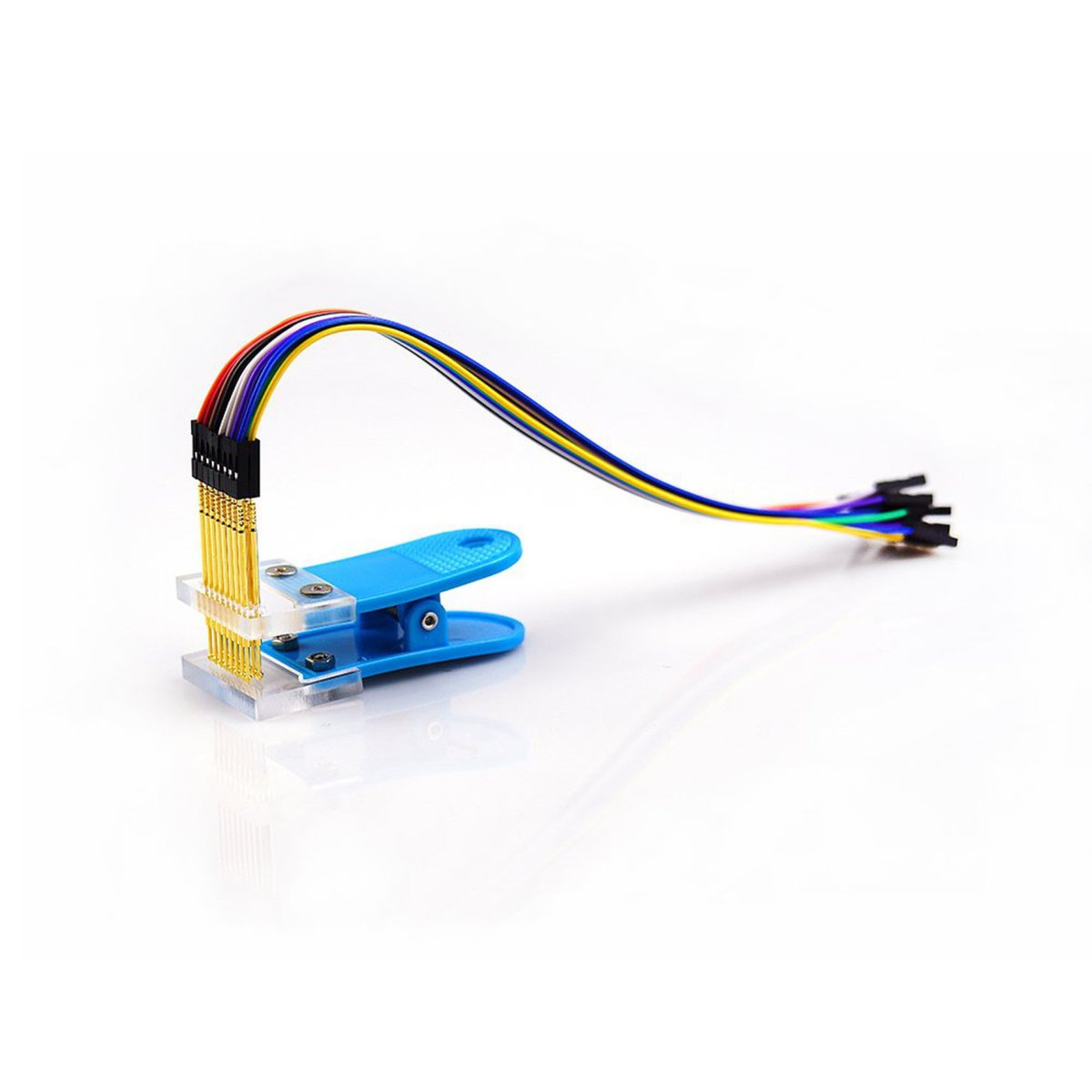If you have ever had to flash a large batch of boards or test a batch of boards for functionality, you’ve probably come across Pogo pins. These spring-loaded pins can be pushed down onto unpopulated pads on the PCB design to create a temporary connection. Connecting pogo pins or creating a DIY pogo pin jig can be a challenge. This simple but effective PCB Probe Clip makes light work of your pogo connection needs.
The benefits of pogo are pretty self-explanatory. You don’t need to populate a board with headers to use them or add cost to your design by adding a specific debug connector. The PCB Probe clip uses good-quality diamond-headed pogo pins with a gold-plated finish which should ensure decent conductivity. The PCB Probe Clip is spring-loaded so that the fitted pogo pins are pushed down with the correct amount of force onto the pads on your project. This means that you don’t have to hold the clip in place and you can use both hands to run other aspects of your board flashing or testing operation.
The PCB Probe clip pogo pins are spaced at the common 2.54mm spacing and it’s available in a wide range of pin and row combinations. It appears that you can remove and replace the pogo pins so it might be worth opting for a larger than you need number of pins and rows giving you flexibility in the pin layout you fit to the clip. The rear of the pogo pins will receive standard Dupont connectors so it’s flexible in terms of connecting it back to the rest of your rig.







